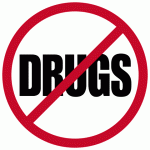Navy Drug Testing Program Expands, Change Includes More Prescription Drug Testing
February 27, 2012 by Da-Chief
Filed under Corpsman.com News, Military Information, Navy News, Recruiting Information
From Navy Medicine Support Command Public Affairs
PORTSMOUTH, Va. (NNS) — Navy and Marine Corps Public Health Center (NMCPHC) announced Feb. 23 that Navy Drug Screening Laboratories (NDSLs) will begin testing for additional prescription medications in May.
“The change is in response to an initiative from the chairman of the Joint Chiefs of Staff in November 2010, which recommended expansion of drug testing to include the most common prescription drugs of abuse,” said Cheri Baird, deputy Navy drug testing program manager, NMCPHC.
The three NDSLs, located in Great Lakes, Jacksonville, and San Diego, are scheduled to begin testing for additional prescription medications May 1 according to a Jan. 31 DoD message.
“We have a projected implementation date [May 1] for the expansion of our drug testing panel at all DoD drug testing laboratories to include hydrocodone and hydromorphone [both semi-synthetic opioids]. Testing for prescription medications is not new for our program. We currently test for codeine, morphine, oxycodone, oxymorphone, and amphetamines. We will now add two more compounds to our panel,” said Baird.
The NMCPHC provides leadership and expertise to ensure mission readiness through disease prevention and health promotion. NMCPHC maintains oversight of the three Navy Drug Screening Laboratories in the United States.
While these semi-synthetic opioids – along with codeine, morphine, oxycodone, and oxymorphone – are often prescribed to relieve pain following an injury, they are potentially highly addictive and their use outside medical supervision can place a service member — and their ship, squadron or unit — at risk, according to the message.
Inappropriate prescription drug use occurs when a particular substance is used outside its intended purpose, beyond the prescription time period, in excess of the prescribed dosing regimen or when a service member uses another individual’s prescribed medications.
“There were a lot of hurdles to jump in preparation – including method development, method validation, and funding. One of the final hurdles was the 90-day notification to the Forces, which occurred Jan. 31,” said Baird.
The May 1 date, set to begin testing for the two additional substances, was designed to provide service members abusing prescription drugs a period to voluntarily seek medical treatment and rehabilitation for themselves on a self-referral basis, prior to the commencement of testing for these controlled substances. Department of Defense and Navy policies indicate that individuals who do not self-refer for treatment and are later identified as positive for controlled substances for which they do not have a valid prescription may be considered in violation of the Uniform Code of Military Justice for drug misuse or abuse.
NDSL Jacksonville Executive Officer Lt. Cmdr. Matt Jamerson said that the testing procedures represent yet another method the DoD is taking to ensure the health, welfare and unit cohesiveness required to ensure Sailors and other service members are maintaining the highest state of readiness.
“Vicodin, a combination of hydrocodone and acetaminophen (Tylenol), was the most prescribed medication in the United States in 2010; 131.2 million of the nearly 4 billion U.S. prescriptions in 2010 were for Vicodin,” said Jamerson. “There is a perception that prescription medications are safe because they are used by physicians to treat injuries and illnesses. This is not the case when a service member uses prescription medications outside of the time period or amount directed by their physician or when they use medications that have been prescribed to another person. In doing so, they put their health and the safety of their team, equipment and mission at risk.”
Navy Drug Screening Laboratory, Jacksonville, celebrating its 28th year as a command in July 2012, is the Navy and Marine Corps’ largest drug testing laboratory, processing more than 1 million specimens in fiscal years 2008 and 2009, and nearly one million specimens in fiscal years 2010 and 2011.
NDSL Jacksonville is a subordinate command of NMCPHC, which manages the Navy Drug Testing Program. Both NMCPHC and NDSL Jacksonville operate under the auspices of Navy Medicine Support Command, which provides a single point of accountability for all Navy Medicine education, training, public health and human resource management for Sailors and Marines as well as providing innovative and responsive leaders in health support services.
NDSL Jacksonville, along with their sister labs in Great Lakes and San Diego, NMCPHC, and NMSC are part of the Navy Medicine team, a global healthcare network of 63,000 Navy medical personnel around the world who provide high quality health care to more than one million eligible beneficiaries. Navy Medicine personnel deploy with Sailors and Marines worldwide, providing critical mission support aboard ship, in the air, under the sea and on the battlefield.
For more news from Navy Medicine Support Command, visit www.navy.mil/local/nmsc/.








